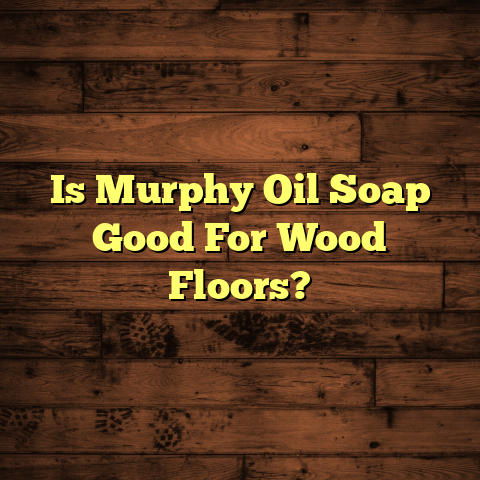Metallic Epoxy Flooring: Concrete Options? [Get Expert Advice]
When I first laid my eyes on a metallic epoxy floor, I felt an inexplicable excitement wash over me. The shine, the depth, the unique patterns that seemed to dance under the light—all of it was like art beneath my feet. As a flooring contractor, I’ve had the pleasure of working with various materials, but metallic epoxy flooring holds a special place in my heart.
The Allure of Metallic Epoxy Flooring
What draws me to metallic epoxy flooring is not just its aesthetic appeal. It’s the transformative power it has over concrete surfaces. I recall one particular project where I renovated a dull, gray garage floor for a client who wanted to turn it into a creative space. The moment the metallic epoxy was poured and spread out, the entire mood of the garage shifted. It went from being a plain utility area to a stunning visual statement.
Why Choose Metallic Epoxy?
Metallic epoxy is not just about looks; it offers durability and versatility. For instance, I’ve installed it in residential settings, commercial spaces, and even industrial environments. My experience shows that it can withstand heavy foot traffic and resist stains and spills better than many other flooring options.
Technical Specifications
Typically, metallic epoxy consists of a base layer of epoxy resin mixed with metallic pigments. The thickness usually ranges between 1/8 to 1/4 inch, which provides enough strength while allowing for artistic effects. The application involves multiple steps, including surface preparation, mixing the components, and pouring the metallic layer.
Installation Process
Getting the installation right is crucial for achieving that stunning finish. Here’s how I usually approach it:
- Surface Preparation: This is where I spend a significant amount of time. The concrete must be clean, dry, and free from any contaminants. Sometimes I use a diamond grinder to ensure a smooth surface.
- Priming: I apply a primer coat to help the epoxy adhere better. This step often gets overlooked, but trust me; it’s essential.
- Mixing the Epoxy: I mix the resin with hardener according to the manufacturer’s instructions. Timing is critical here since I need to work fast before it sets.
- Applying the Metallic Layer: This is the fun part! I pour the metallic epoxy onto the surface and use a squeegee to spread it evenly. Depending on the design I want to achieve, I might use different techniques like swirling or dragging.
- Topcoat: Once the metallic layer cures, I apply a clear topcoat for added protection.
Challenges Faced
Of course, no project is without its challenges. One time, I underestimated the curing time due to high humidity levels. This led to some imperfections that required rework, costing me both time and materials.
Another challenge is ensuring an even application of the metallic layer. I’ve learned that using too much or too little can drastically change the final appearance. Over the years, I’ve developed my techniques to mitigate these issues, including practicing on smaller samples before tackling larger projects.
Cost Estimation with FloorTally
When I’m estimating costs for a project involving metallic epoxy flooring, I rely heavily on FloorTally. It helps me pull local material and labor rates effortlessly, allowing me to provide accurate estimates to my clients right off the bat.
For example, a recent project involved a 500 square foot garage floor. Using FloorTally, I quickly calculated that materials alone would run around $2,000, factoring in both the epoxy and additional supplies like primer and topcoat. Labor costs added another $1,500 based on my usual hourly rate and estimated hours needed for installation. Having this information handy made discussing budgets much more straightforward with my client.
Maintenance Tips
After installation, clients often ask about maintenance. Here are my go-to tips:
- Regular Cleaning: A simple sweep or vacuum should do the trick for everyday dirt. For tougher stains, a mild detergent mixed with water works wonders.
- Avoid Harsh Chemicals: Some cleaners can damage the epoxy surface. Always stick to pH-neutral products.
- Protect from Heavy Objects: While metallic epoxy is durable, dragging heavy furniture can scratch it up. Use furniture pads to prevent damage.
- Reapply Topcoat: Depending on foot traffic levels, consider reapplying a clear topcoat every few years to maintain that shine.
Comparing Different Options
While metallic epoxy flooring is an excellent choice, it’s essential to compare it with other flooring options I’ve worked with:
- Polished Concrete: Often more affordable than metallic epoxy but lacks that unique shimmer and color depth. It’s great for industrial settings but may not appeal to homeowners looking for something more decorative.
- Vinyl Flooring: Easier and quicker to install but much less durable than metallic epoxy. Vinyl can be prone to tearing and fading over time.
- Tile: Offers great aesthetics and durability but can be cold underfoot and requires grout maintenance—something many homeowners want to avoid.
Personal Anecdotes
One time, I worked on a restaurant that wanted something eye-catching yet functional for their dining area. We decided on a custom metallic epoxy design featuring deep blues and silvers that reflected their brand colors. The result was stunning! Customers were often seen taking photos of the floor instead of their meals!
In contrast, I once had a challenging client who insisted on an intricate design that required several layers of different colors. This took longer than anticipated and led to some creative differences along the way. However, when we finally completed it, the client was thrilled—and so was I.
Understanding Metallic Pigments
The heart of metallic epoxy flooring lies in its pigments. These aren’t your average paint pigments; they’re specially designed for this type of application. Metallic pigments come in various colors and sizes, each offering distinct visual effects when mixed into the epoxy resin.
Types of Metallic Pigments
- Aluminum Pigments: These are commonly used due to their reflective properties which create a shiny finish.
- Copper Pigments: Offering warm tones, copper pigments are great for creating earthy designs.
- Mica Pigments: These provide a more pearlescent finish compared to aluminum or copper options.
- Colored Epoxy Resins: Some manufacturers offer colored resins that are pre-mixed with metallic effects for specific applications.
Mixing Techniques
When mixing these pigments into your resin, you can achieve different looks based on how you combine them:
- Monochrome Look: Use one color of pigment for a uniform appearance.
- Layering Technique: Apply different colored layers for depth.
- Swirling Technique: Mix two or more pigments together in a swirling motion for a dynamic effect.
Real-Life Applications
I’ve installed metallic epoxy flooring in various environments—each project showcases how versatile this material can be.
Residential Spaces
In homes, metallic epoxy can add a luxurious touch to living rooms or kitchens. One memorable project was transforming a basement into an entertainment area with dark blue and silver swirls that resembled ocean waves. The clients frequently host gatherings now, and they often tell me how many compliments they receive on their unique flooring.
Commercial Spaces
For businesses, I’ve seen metallic epoxy used in showrooms and retail stores where visual impact is vital. An auto shop I worked with had me create a floor resembling asphalt with silver accents—perfect for highlighting their vehicles while being easy to maintain.
Industrial Environments
In industrial settings, durability is key. I once completed an installation in a warehouse where spills were common. The metallic epoxy provided not only aesthetic value but also resistance against oil stains—a win-win for my client.
Environmental Considerations
As awareness of environmental issues grows, so does the demand for eco-friendly materials in construction and renovation projects. Luckily, many manufacturers are now producing low-VOC (volatile organic compounds) metallic epoxies that are safer for indoor air quality.
Benefits of Low-VOC Products
- Healthier Indoor Air Quality: Reduced VOC emissions mean fewer harmful chemicals released into the air.
- Sustainability: Many eco-friendly products come from renewable resources or have lower environmental impact during production.
- Compliance with Regulations: Many cities have strict regulations regarding VOC emissions; using low-VOC products ensures compliance.
Seasonal Effects on Installation
Weather can significantly affect the installation process of metallic epoxy flooring. In my experience, certain seasons present unique challenges:
Summer Heat
During hot months, the quick curing time can create challenges. If you’re not prepared, you could end up with an uneven finish because the resin sets too quickly before you’ve had a chance to manipulate it properly.
Winter Cold
Cold weather can slow down curing times significantly. On particularly frigid days, I’ve had to employ space heaters to maintain optimal temperatures in enclosed spaces before applying the epoxy.
Future Trends in Metallic Epoxy Flooring
Looking ahead, it’s exciting to consider what advancements might come in metallic epoxy technology. Some trends I’ve noticed include:
Increased Customization Options
Consumers are becoming more demanding about personalization in their homes and businesses. Manufacturers are responding by offering customizable colors and effects—allowing contractors like me to create truly one-of-a-kind floors.
Smart Flooring Solutions
With technology advancing rapidly, there’s potential for smart flooring solutions that incorporate sensors or heating elements within the resin itself—offering comfort alongside style.
Improved Sustainability Practices
As environmental awareness continues to grow, I anticipate more manufacturers will shift towards sustainable practices in producing their products—whether through recyclable materials or lower emissions during production.
Client Education
Educating clients about their flooring options is crucial in my job as a contractor. With metallic epoxy flooring gaining popularity, many clients come to me with questions or misconceptions about what it entails.
Addressing Concerns
Some clients worry about slip resistance because of the glossy finish associated with metallic epoxy floors. However, there are additives available that can enhance traction without compromising aesthetics—ensuring safety without sacrificing style.
Highlighting Versatility
Many people think of metallic epoxies strictly in commercial settings or high-end residential applications but fail to realize their adaptability across various environments—from basements needing renovation to garages looking for an upgrade.
Conclusion
Metallic epoxy flooring offers not just an aesthetic choice; it’s a blend of art and function that can transform any concrete surface into something extraordinary. My experiences with this type of flooring have shown me both its potential and its challenges.
The key lies in understanding its installation process, being aware of maintenance needs, and knowing how to navigate cost estimations effectively with tools like FloorTally. Whether you’re considering it for your home or a commercial space, my advice is simple: embrace creativity in your choices and enjoy the process!
The beauty of working with metallic epoxy is ultimately about creating spaces that inspire—where floors become focal points rather than afterthoughts—and that’s truly rewarding!


![Pergo Floors: What You Need To Know [Now]](https://floortally.com/wp-content/uploads/2025/05/Pergo-Floors-What-You-Need-To-Know-Now.png)

![Can You Steam Clean Concrete Floors? [Quick Guide]](https://floortally.com/wp-content/uploads/2025/01/Can-You-Steam-Clean-Concrete-Floors.png)
![How To Fix Flooded Floors: [Quick Home Rescue]](https://floortally.com/wp-content/uploads/2025/01/How-To-Fix-Flooded-Floor.png)
![How to Clean LVP Flooring [Pro Cleaning Guide]](https://floortally.com/wp-content/uploads/2025/01/What-Do-You-Use-To-Clean-Lvp-Flooring.png)